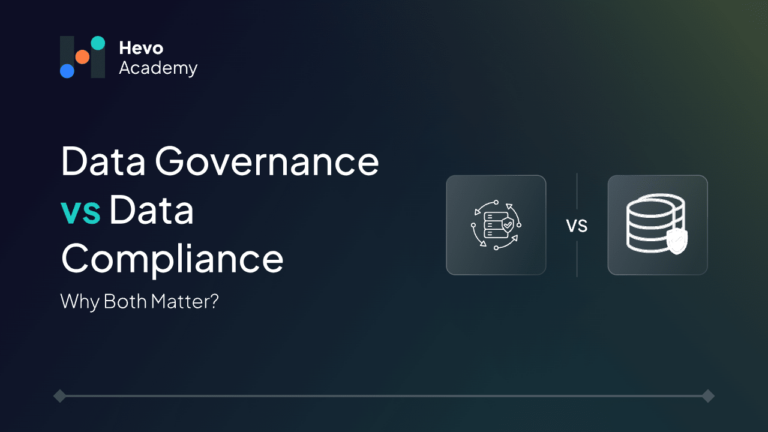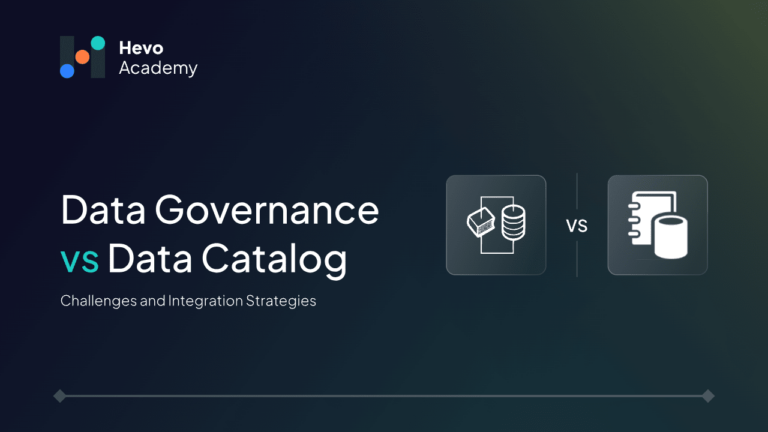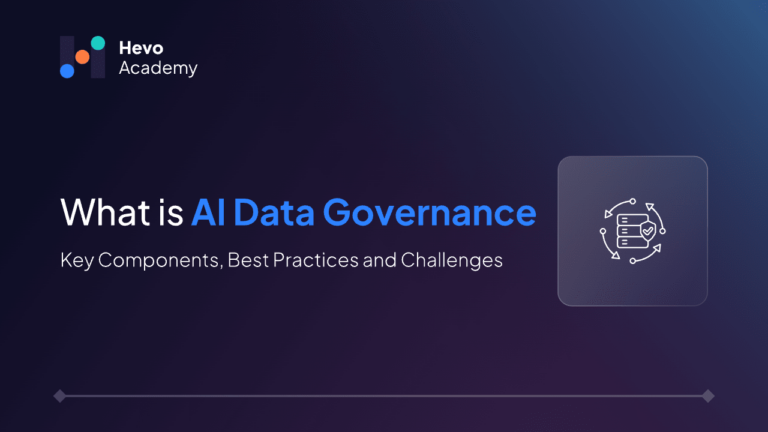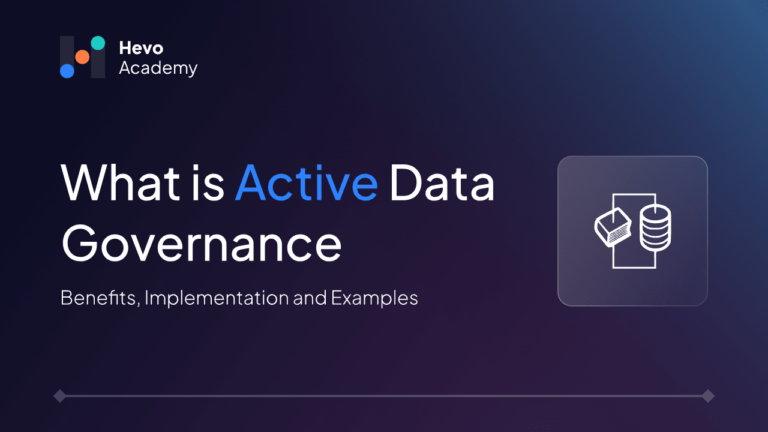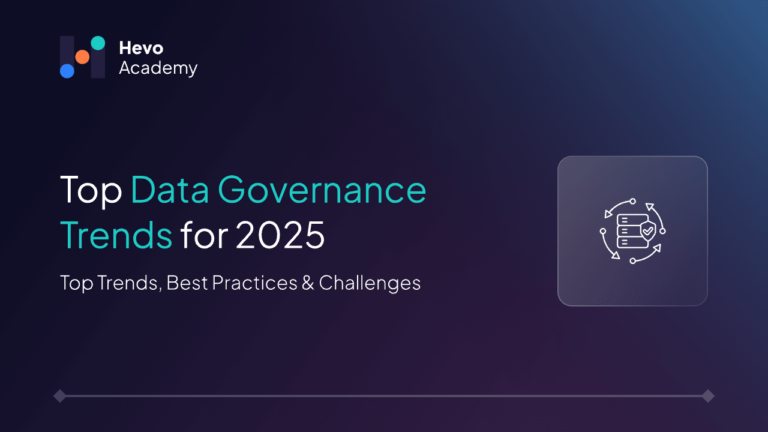Imagine a global corporation hit with a $1.2 billion fine for failing to meet data privacy regulations. The GDPR in 2023 resulted in a devastating $1.2 billion fine imposed on Meta. The combination of rising data breaches and increased regulatory scrutiny demands that businesses demonstrate both regulatory compliance and data governance frameworks.
Table of Contents
While data governance focuses on managing data, data compliance ensures organizations follow legal and regulatory standards. Companies that fail to align the two risk financial penalties, data leaks, and loss of customer trust. This blog examines the differences between data governance vs data compliance and explains their necessary integration, along with the best solutions for challenges.
What is Data Governance?
Data governance is a framework that defines how data is managed, secured, and regulated within an organization. It establishes policies, roles, and controls to ensure data quality, compliance, and integrity across its lifecycle (Dataversity).
Providing effective governance minimizes data silos while ensuring data consistency and security, which helps organizations unlock maximum data value and maintain compliance. Data governance enables data-driven decisions through its ability to maintain accurate and accessible data governed by standardized policies.
Why is Data Governance Important?
- Ensures Compliance – Aligns with GDPR, HIPAA, and CCPA regulations.
- Improves Data Quality – Reduces errors, duplication, and inconsistencies.
- Strengthens Security – Implements access controls and encryption.
- Enhances Decision-Making – Provides trusted data for analytics and AI.
- Reduces Risks – Prevents data breaches and privacy violations.
What is Data Compliance?
Data compliance establishes the requirements that companies must fulfill when handling data in accordance with the requirements of the law and business standards. All companies must comply with laws like GDPR, HIPAA, and CCPA since these legislations define collecting, storing, protecting, and keeping data confidential (Data Compliance).
External entities provide mandatory legal requirements to ensure compliance, whereas data governance lays down rules for in-house procedures. To become compliant, companies must use encryption mechanisms in conjunction with systems of access control to provide audit trails. Companies that fail to comply face heavy financial penalties and negative impacts on their reputation. Stringent data laws urge companies to implement compliance strategies to safeguard sensitive data and acquire customer trust.
Why is Data Compliance Important?
- Prevents Legal Penalties – Avoids fines for violating GDPR, HIPAA, and CCPA.
- Protects Customer Data – Strengthens privacy and security measures.
- Enhances Business Reputation – Builds trust with customers and stakeholders.
- Ensures Operational Integrity – Standardizes data handling across industries.
Core Differences: Data Governance vs Data Compliance
| Aspect | Data Governance | Data Compliance |
| Purpose | Defines internal policies for data management. | Ensures legal adherence to regulations. |
| Focus | Data security, access, and quality. | Privacy, audits, and regulatory rules. |
| Enforcement | Organization-driven policies. | Law-driven mandates (e.g., GDPR, HIPAA). |
| Scope | Covers data integrity and governance structures. | Focuses on legal privacy and security. |
| Responsibility | Managed by data stewards and IT teams. | Ensured compliance and legal teams. |
| Risk of Failure | Causes data silos, inefficiencies. | Leads to fines, lawsuits, and breaches. |
| Implementation | Uses frameworks and standards. | Requires audits, encryption, and reporting. |
| Flexibility | Adaptable to business needs. | Strict, non-negotiable legal requirements. |
| Impact | Improves data usability. | Prevents legal & financial risks. |
Detailed Differences Between Data Governance vs Data Compliance
Data governance shares its main objective with data compliance to maintain responsible data management. The technical differences between these practices are as follows:
1. Purpose & Focus
The frameworks of data governance within companies handle security and integrity while using usability methods to work together with usability frameworks. The use of data governance systems facilitates consistency in conjunction with easy access to data across entire organizational networks. External legal requirements that data compliance ensures through its implementation. The key instances of data protection for consumer rights include GDPR along with HIPAA and CCPA instances.
2. Enforcement & Oversight
The internal governance system depends on data stewards along with IT groups and governance committees to execute its operations. The committees follow up processes according to business requirements. The monitoring of detailed legislation by enforcers becomes necessary because of compliance enforcement obligations.
3. Scope & Application
A single control mechanism handled by organizational governance handles all organizational data and establishes rules to determine data structure and rights of access in conjunction with security controls. Compliance restricts its use under compliance requirements; businesses must respect the privacy boundaries of data and sustain data security posture and regulation compliance for specific industries.
4. Risk of Non-Compliance or Weak Governance
Weak governance systems create isolated data systems that produce incorrect decisions, and ununified information produces untrustworthy data. A regulatory breach of GDPR principles leads to significant monetary penalties in the form of multimillion-dollar fines and a loss of company credibility.
5. Implementation & Frameworks
Data governance depends on metadata management systems together with a set of predefined rules to function. The rules for access control, together with classification procedures for data, enable structured data to be handled through controlled data mechanisms. The system needs to follow requirements for audit trails and encryption standards, data storage and regulations compliance systems, and maintain legal adherence through routine regulatory examinations and established rules and data retention norms.
6. Flexibility & Adaptability
The framework adjusts its organizational structure to satisfy both organizational needs and current technology infrastructure requirements and present technology infrastructure. The regulations within compliance systems generate highly demanding rules. All organizations must strictly conduct the implementation of established rules.
7. Business Impact
Governance practices create superior decisions by systematically utilizing data for information-based decision systems. The system provides transparent data components that enable operational responsiveness alongside making better choices. Operations gain better responsiveness from the system while maintaining transparent features. Data elements through data-driven decision-making. Organizations remain compliant so they can. Organizations can protect customer faith and prevent penalties through well-defined protection systems they implement for data assets.
How does Data Governance support Data Compliance?
Organizations achieve data compliance through governance frameworks that provide the basis for establishment. The organization needs a predetermined framework to fulfill its legal responsibility with a governance structure. Organizations maintain effortless compliance operations through rules, security procedures, and data rules. Organizational rules extend from one end of the business structure to the other.
1. Standardized Data Policies Ensure Regulatory Adherence
Data standards implemented as policies help organizations stay compliant with regulatory requirements. Standards for data management within organizations defend organizations from potential non-compliance with regulation requirements. The system allocates data types before setting storage boundaries which users can authorize. Organizations become able to meet the requirements of GDPR, HIPAA, and CCPA through implemented access management.
2. Data Quality & Integrity Reduce Compliance Risks
Quality standards applied to data integrity help companies shield themselves from possible compliance violations. Through its governance system, the organization protects data precision and avoids data errors.
3. Access Controls & Security Measures Prevent Violations
Combining data protection protocols with access regulations serves to prevent possible violations from happening. Occurring. Protection measures consisting of role-based access controls paired with encryption protocols form an effective barrier toward possible data violations.
4. Automated Data Lineage & Audit Readiness
Transparent reporting alongside easy auditing becomes possible through monitoring data origins and movements between users. When governance practices are strong, compliance becomes a proactive system that lowers risks and enhances data security.
Can an Organization Have Data Governance Without Being Compliant, or Vice Versa?
Data Governance Without Compliance: A Risky Approach
An organization may implement data governance in the absence of full compliance; however, this choice will bring about dire risks. Governance deals with internal policies, data security, and management, ensuring consistency and quality of data. Non-compliance would subject the companies to penalties, lawsuits, and reputational damage for breaking laws like GDPR and HIPAA.
Compliance Without Governance: A Weak Foundation
A corporation can accomplish regulatory compliance without established governance, but this is a reactive and short-term solution. Without governance, organizations bear data variations, security holes, and ineffective access restrictions.
Why Both Are Essential?
Governance and compliance are essential for organizations for a secure, efficient, and lawful environment. Governance guarantees data security, best implementation, and accountability, while Compliance ensures legal conformity. Combining both can create a robust, well-maintained, and verifiable data system.
Challenges & Best Practices for Integrating Governance and Compliance
Challenges
- Inconsistent Data Standards – Organizations often lack standardized data classification, retention, and security policies, leading to inconsistencies in compliance enforcement.
- Evolving Regulatory Landscape – Compliance laws such as GDPR, HIPAA, and CCPA are frequently updated, requiring organizations to adopt flexible and adaptive governance frameworks.
- Siloed Data Management – Decentralized data ownership creates gaps in governance oversight, leading to inconsistencies in data access and compliance enforcement.
- Lack of Automation – Manual compliance tracking processes introduce inefficiencies, errors, and challenges in audit readiness.
- Balancing Data Accessibility & Security – Organizations struggle to offer self-service analytics while maintaining strict data privacy and security controls.
Best Practices
- Establish Unified Policies – Develop a centralized governance and compliance framework that includes standardized data classification and access policies.
- Automate Compliance Monitoring – Leverage AI-driven tools for real-time auditing, anomaly detection, and enforcement of governance rules.
- Integrate Governance with Compliance Systems – Connect governance platforms with legal audit, risk management, and security tools to streamline regulatory adherence.
- Implement Role-Based Access Controls (RBAC) – Ensure that data accessibility is aligned with compliance requirements to prevent unauthorized access and security breaches.
- Continuously Monitor & Adapt – Regularly update governance policies and frameworks to align with evolving regulatory requirements and emerging risks.
Conclusion
Organizations can treat data governance and compliance as a single identity if not, they face difficulties. Without the use of compliance, they lack legal liability, and on the other hand, without governance, compliance efforts become volatile and unjustifiable.
By streamlining processes into an automated compliance tracking mechanism combining templated policies and an AI-enabled governance framework, businesses can eliminate risk, create efficiency in operations, and help build trust in a data-driven world. The future of data management lies in a proactive, adaptive approach, where governance enforces structured policies, and compliance ensures legal resilience. If you are looking for an automated tool for data replication, try Hevo. Sign up for a 14-day free trial to migrate your data smoothly for seamless governance and compliance.
FAQs
1. What are the 5 C’s of data governance?
The 5 C’s are Consistency, Compliance, Control, Confidence, and Collaboration. They ensure data integrity, security, regulatory adherence, and effective management across an organization’s data ecosystem.
2. What is the difference between IT governance and IT compliance?
IT governance defines strategic policies and risk management, while IT compliance ensures adherence to regulations like GDPR and HIPAA. Governance is internal and proactive; compliance is externally mandated.
3. What is the governance and compliance strategy?
A governance and compliance strategy aligns internal data policies with legal regulations to ensure secure, auditable, and standardized data management, reducing risks and legal exposure.

